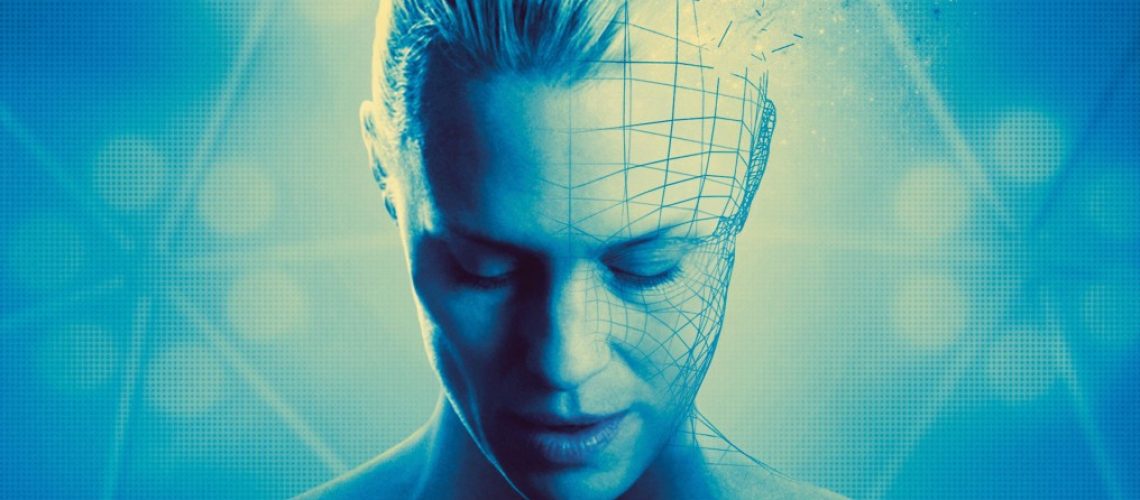Imagine a movie star, an icon, albeit one with somewhat faded glory. She has been asked by a studio to scan her, all of her, to use in movies. She will no longer have to act, or even will be allowed to act. All of her movies will be done by her digital avatar. Press junkets? Forget them, her Digital Avatar can do those too.
This is not real life, as yet, just the first third of the movie The Congress, starring Robin Wright.
The news of the Writer Author’s Guild going on strike, followed by the SAG-AFSTRA Strike, and the desire for studios to use so-called A.I. not only in scripts and writing, but, more crucially, to scan the images of background actors without their knowledge and consent, convinced me that I needed to rewatch this 2013 movie that has proven rather prescient.
And so we come to The Congress (2013).

The movie star in question is Robin Wright, the Princess Bride, playing a version of herself. This version of herself has not done much in Hollywood since her early days, being something of a difficult person to work with. But the promise of the Princess Bride is still there, still has value. And so Harvey Keitel, her agent, convinces her to take this deal. In addition, this Robin Wright has a son, Aaron, with progressive medical conditions threatening to make him deaf and blind permanently. (Paul Giamatti plays her son’s doctor.)
And so Robin signs on the dotted line. I am pretty sure this fantastic and science fictional technique (Robin sits in a planetarium-like sphere and is captured in a variety of angles) would be something studios today would love. No more balky actors and actresses (a point raised explicitly by the Miramount {Paramount plus Miramax?} studio head played by Danny Huston). Robin has been difficult to work with for years; a digital version of herself would be far more pliable. One thing that this movie posits is the idea of “the last contract”, where actors do sign away their rights, but specify in their contract that their digital selves will not do, for example, porn. Robin is resistant to doing that, and also to science fiction, something that the studio head ultimately talks her into. A 20-year contract, to then be renegotiated.
And so ends part one.
As odd and strange part one might have been, this is the most mundane part of the movie.
Part two takes place 20 years later. Robin, her contract over, is driving in the desert to the Miramount Abrahama Hotel. The Hotel and the Abrahama City area around it are in what is described as a “restricted animation zone”. What this is becomes clear when she is forced to take a mandatory hallucinogenic drug that transforms her perception of the world. Under the influence of this drug, she then drives through to the hotel to a bizarre animated universe. People are free in this world to reimagine themselves as anything they like and carry those perceptions to the world around them.
We also get to see quickly that the digital version of Robin indeed is doing science fiction movies, as “Agent Robin”, a fighter against oppression of Robots. Her digital self has become the science fiction star that the studios always wanted. In fact, she appears to be the star at Miramount. Once she gets to the Hotel, she sees that people are in a bewildering variety of forms, and change forms on a whim (including when we see someone change into an animated form of Agent Robin). No one recognizes her; the world has seemingly passed her real self by. Except by the studio head, and Dylan, an animator who works on her films.
We get early hints of what the rest of the movie is to come, and the world that is being created. In a world that is dictated by your choices and the mind, that can lead to some pretty dark things. Robin quickly finds herself unable to separate fantasy from reality and what starts as being unable to change the lights in her room turns darker and more twisted as she builds up to her visit to the “Futurist Congress”.
This disjunction for Robin and also for the viewer (sequences happen whose validity and reality are constantly questionable) only amplifies after a terrorist attack at the height of the Congress that assassinates the Elon Musk-like “Reeve Bobs” (who just declared the Chemical Revolution), and so she is frozen for 20 years due to her now evident hallucinogenic poisoning.
When she is finally thawed, and healed, it appears that the revolution has succeeded. The entire world, it seems, is like Abrahama, a continuous chemical party. A world that is nothing but animated. Everyone can be what they want to be, everyone can spread that to others so that they see what they want to be. Dylan, it turns out, has been waiting for her, in a somewhat creepy and offputting way. He gives her, and the viewer, a tour of what NYC looks like in the chemical party, and the visionary gorgeousness of the second third of the movie is amped a notch. The world as Abrahama is a gorgeous piece of artifice, a wondrous locale where people change image, shape, gender with just a sip of a vial. The visual references and allusions come fast and furious, from animated versions of Robin’s SF character, to Chinese sages, 1950s music stars, and much more. This section of the movie is a visual feast.
After this tour of the animated world that has come in the last 20 years, Robin finally escapes to the “real world” , and finds it is a poor and dying world. The world is in fact in a rather sorry state of affairs once you delete the chemical influences. The world is a “filth of truth” where the people on that side, who run the world and are waiting for death. The chemical party is a myth, a lie, a comforting image over a world where few children are born, infrastructure is crumbling, dirty, dystopic. Even the airships above the ruined city feel like small refuges, small islands against a depressing and dying world.
Through it all though, Robin seeks her son. Although she has a daughter, it is the connection to Aaron that drives her, in the beginning of the movie, and now, here in the end. Having seen the “filth of truth”, and learning her son, just in the last six months, has “Crossed over”, she decides to rejoin the Chemical Party to seek Aaron. But the point of the movie is that the other side is subjective, completely subjective, and she cannot return to the world she has just seen, with Dylan, even if she wanted to. Her experiences drive the narrative of her world, and to return to the Chemical Party would mean a whole new subjective world. Ultimately, in the end, it looks like she does reunite with Aaron, but is he “really there”? Does she really reunite with him? Like the ending of the movie Inception, another movie about dreams and manufactured realities, it remains for the viewer to decide, or not, what the ending means.
Frankly, the movie’s vision of the future is terrifying on a number of levels. The idea of actors and actresses losing their careers to computer versions of themselves, becoming obsolete. And then there is the hallucinatory reverie of the “fully restricted animated zone” of Abrahama, and then the entire world, is also disturbing. An endless hallucination, a subjective reality that you can’t voluntarily leave, is a prison and a hell, not freedom.
The Congress is a cautionary tale, and a potent one. In an age where studios want to use so-called A.I to replace writers and actors, this strange movie from 2013 sees these issues coming and shows the danger of such a regime.







